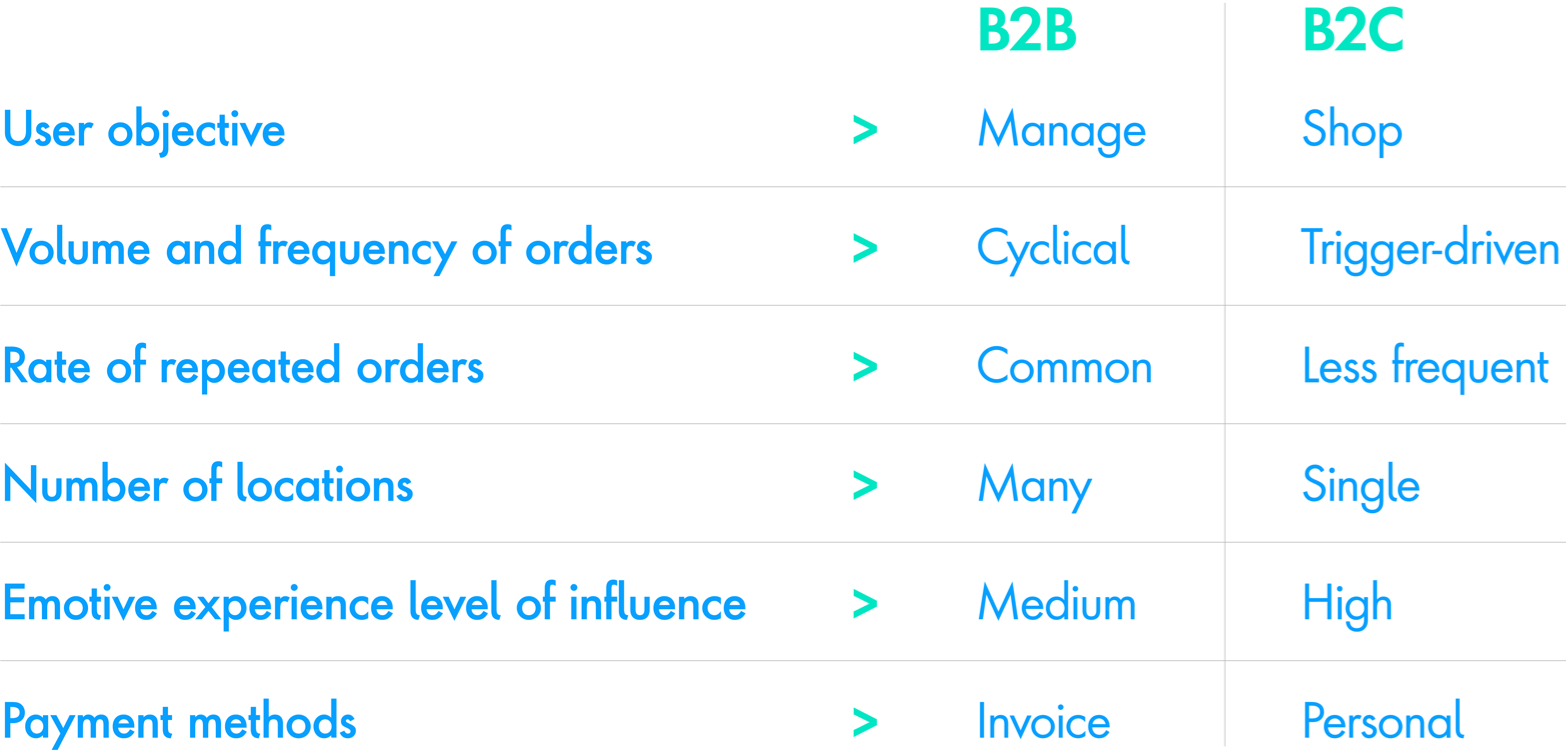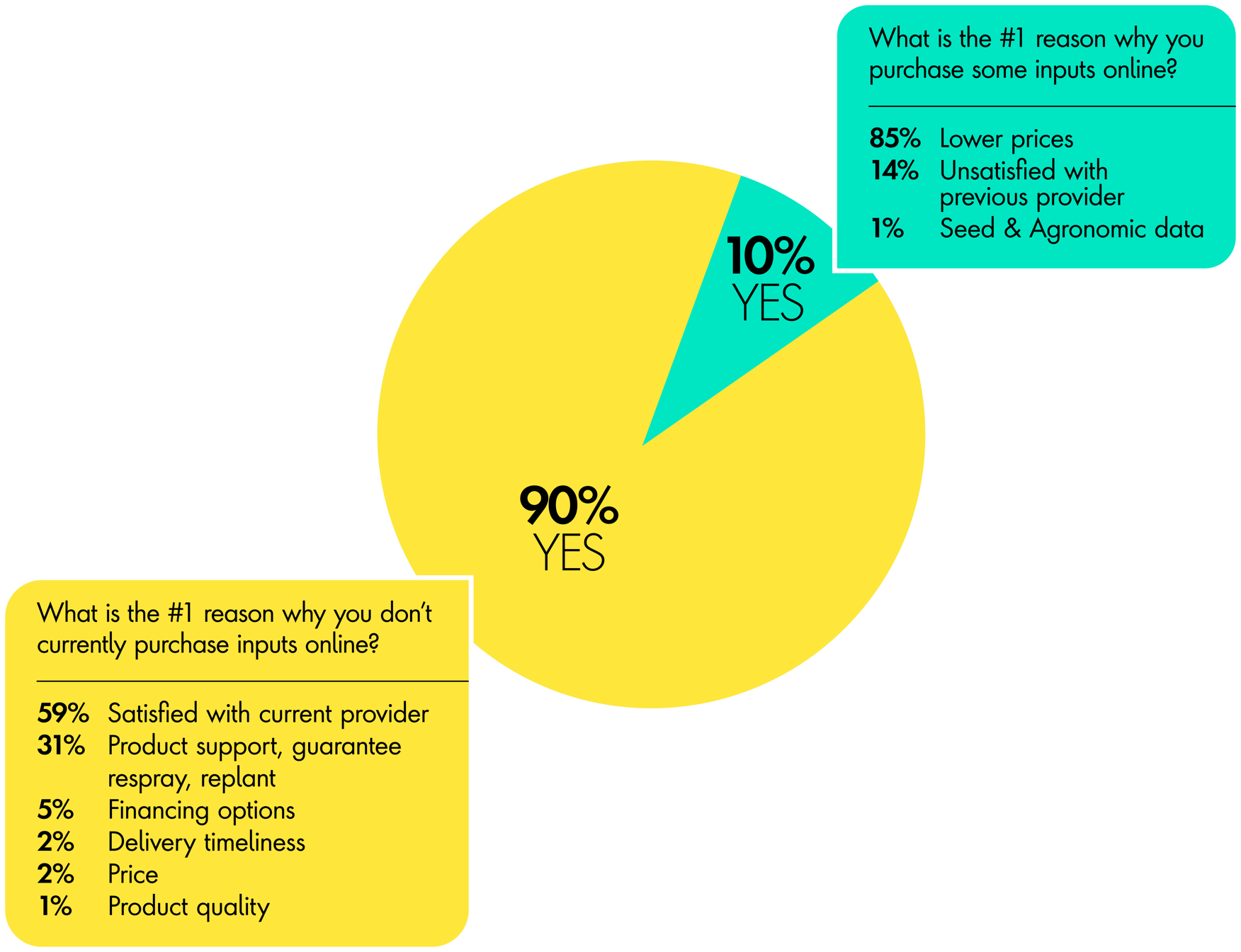What issue can we solve for you?
Type in your prompt above or try one of these suggestions
Suggested Prompt



Energy & Commodities
The Agribusiness Growth Model: A B2C Focus
The Agribusiness Growth Model: A B2C Focus
Combine B2B strategies with a consumer approach to help enhance experiences
Take-aways readers can expect from the video:
- Why agribusiness needs to adopt a B2C mindset
- What agribusiness needs to consider when transforming sales and digital marketing
- How B2B companies can get started
This video explores how B2B agribusinesses can borrow customer-centric strategies from B2C organizations to create more personalized experiences for customers.
Why adopt a B2C mindset?
Successful business-to-consumer (B2C) marketing and commerce is about building digital into the organization itself. It is an approach fueled by the ability to move quickly and easily by leveraging digital technology and tools. As the transfer of consumer demand from offline to online pathways accelerates, direct-to-consumer e-commerce has become crucial for B2C businesses. Investment in data and digital enables the whole organization to collaborate and deliver exceptional customer experiences. It optimizes opportunities to acquire new customers, and enhances engagement with existing customers while reducing operational costs.
Business-to-business (B2B) commerce is conducted between companies, rather than between a company and the end user. B2B sales are often driven by existing relationships, and many B2B organizations have not invested in digitizing the process to make this happen more quickly and effectively. In addition, the traditional B2B focus on the product, rather than the customer, has been deeply ingrained in industries defined by their products. Consequently, their online sales channel can appear like a little more than a digital brochure, with product specifications coupled with an offline sales workflow.
According to research by Forrester, 92 percent of B2B purchases start with an online search, and 68 percent of B2B buyers prefer to research online on their own – up from 53 percent in 2015. More than half (60 percent) of B2B buyers prefer not to interact with a sales rep as the primary source of information, and 75 percent of B2B buyers use social networks to learn about different vendors. B2B organizationsare realizing they must change focus in order to create and support the future of their business.
B2B organizations are realizing they must change focus in order to create and support the future of their business.
The required shift in perspective
Traditional B2B commerce differs from B2C in several key aspects. This includes but is not limited to:

Many B2C retailers have focused their efforts on customer engagement and evolving customer needs. They are investing in e-commerce channels and providing Amazon-like experiences, such as instant digital availability; accurate, quick and contextual product information search; self-service; solutions, not just products; transparent pricing and delivery; personalized service and support; and mobileoptimized, real-time, data-driven experiences. By contrast, B2B retailers have opted to focus on support and back-office optimization rather than on sales and customer experience.
By combining the customer-centric thinking of B2C brands with the unique considerations of running a B2B business, agribusiness can create great experiences and unlock sources of competitive advantage.
By combining the customer-centric thinking of B2C brands with the unique considerations of running a B2B business, agribusiness can create great experiences and unlock sources of competitive advantage.
What to consider when transforming sales and digital marketing
When it comes to new customer expectations, B2Bs face challenges like aging technologies, hesitation to evolve familiar ways of selling and high costs associated with transformation. Thus, B2B companies trail most other industries on investments such as digital content, e-commerce, new products and improving customer experience and services across the end-to-end journey.
The COVID-19 pandemic has disrupted buying journeys across B2B and increased the involvement of customer service functions, such as returns and logistics. It seems only a matter of time that this new higher dependency on digital functionality will crush lingering myths that B2B customers require face-to-face relationships. B2B suppliers who deliver an outstanding digital experience to their buyers are more than twice as likely to be chosen as a primary supplier than those who provide poor digital experiences, and about 70 percent more likely than those providing only fair ones.
B2B suppliers who deliver an outstanding digital experience to their buyers are more than twice as likely to be chosen as a primary supplier than those who provide poor digital experiences, and about 70 percent more likely than those providing only fair ones.
Farm Journal found that 14% of Farmers who have moved to purchasing inputs online did so because they were unsatisfied with their previous provider and with 90% of farmers not currently purchasing online, there is huge potential to grab market share.
Do you currently purchase inputs online?

There remain several important differences to recognize when shifting a B2B business mindset to a B2C outlook. Location is an important consideration, as B2B businesses can be multiple in countries that will entail more complexity than in the case of B2C organizations. Similarly, when it comes to user management of digital platforms and content, the conversational and bespoke nature of B2B interactions is often not present in B2C.
Agribusiness can overcome those obstacles in the B2B space by using innovative technologies and marketplaces and aggregators. To keep pace with change, companies must integrate an e-commerce architecture built to support B2B, and empowers them to create compelling and differentiated customer experiences. This can include using relevant initiatives such as API portfolio planning, rolling out Salesforce and ERP rationalization.
Agribusiness B2B leaders exploring emerging business models will find the best innovative marketplace initiatives, many of which have sprung up in the agricommerce space. These include trading platforms to execute sales, leasing and rental of agriculture machinery and equipment; farmers-to-farmers or farmers-torestaurants and retailer networks; B2C retail and distribution of food and equipment; B2B procurement of wholesale food, grocery and equipment marketplaces; direct sales platform for agriculture inputs, machinery and replacement parts; agriculture insurance and procurement financing; and finally crowdfunding or financing for farmers.
Marketplace initiatives have enabled farmers who built businesses marketing locally grown produce to grow across the country. After expanding the family farm business from selling at the local market to a network of local retailers, Sarah Frey secured her first contract with major national retailer Walmart, thus making Frey Farms pumpkins and watermelons available across the country. Her business, Frey Farms, is now a multistate company producing, packing and shipping watermelon, cantaloupe, sweet corn, pumpkins and squash to all the top U.S. retailers.

How B2Bs can get started
Digital leaders in B2B have a lot to gain – they can achieve up to five times the revenue growth and up to eight times the EBIT (earnings before interest and taxes) growth of their industry competitors.
The American company Saltworks, which imports, manufactures and supplies gourmet salt, undertook the challenge to unify its B2B and B2C sales with one platform. After considering multiple options such as BigCommerce, WooCommerce and Magento 2, the company decided to implement OroCommerce, a flexible open-source B2B e-commerce platform. Saltworks now operates both B2B and B2C websites from one platform and analyzes and tracks both B2B and B2C sales from one admin panel. Saltworks also added site functions such as a button for customer purchases through Amazon Seller Accounts. This has resulted in higher data integrity and more accurate and reliable syncing to its CRM and ERP systems.
Digital leaders in B2B have a lot to gain – they can achieve up to five times the revenue growth and up to eight times the EBIT (earnings before interest and taxes) growth of their industry competitors.
Cargill, one of the world’s largest agribusinesses, launched a new digital platform, myCargill.com, to make it easier to connect with customers. The company is one example of an agribusiness leader applying new technologies to deliver B2C grade experiences combined with B2B grade capabilities to transform how business is conducted across the food supply chain. Cargill introduced its e-commerce platform to streamline edible oil buying experiences. The company also provides a fast and easy-to-use option to manage orders and instantly access key information such as food safety data and technical product specifications. As its platform grows over time, Cargill intends to create a unified experience for its customers. An increasing number of customers will be able to place orders online, read food safety information, access product specifications and documentation and review contract balances and invoices. The aim is to provide customers with solutions, not only products. To achieve this using an agile approach, Cargill plans to expand its platform through a series of releases, quickly incorporating customer feedback and continually updating.
By borrowing customer-centric strategies from B2C organizations, B2B agribusinesses can increase revenue growth. They can meet their customers’ evolving expectations by creating more personalized experiences. Using digital strategies also creates opportunities to acquire new customers, enhances engagement with existing customers and reduces operational costs.
Related Reading
-
![Direct-to-Consumer for Consumer Products]()
Insight
Direct-to-Consumer for Consumer Products
Publicis Sapient built an out-of-the-box capability that can stand up a direct-to-consumer business in four weeks.
-
![Redesigning Food Supply Chains]()
Insight
Redesigning Food Supply Chains
We examine the shifts in thinking that must be considered as businesses within the food supply chain look to evolve their strategies in light of the recent pandemic escalations.
-
![Customer Data Platform: Switch on Your Sixth Sense]()
Services
Customer Data Platform: Switch on Your Sixth Sense
Publicis Sapient was born in the digital age, for the digital age. We offer customer-first insights and solutions to ensure our clients get the right CDP for their industry and individual challenges — fast.








